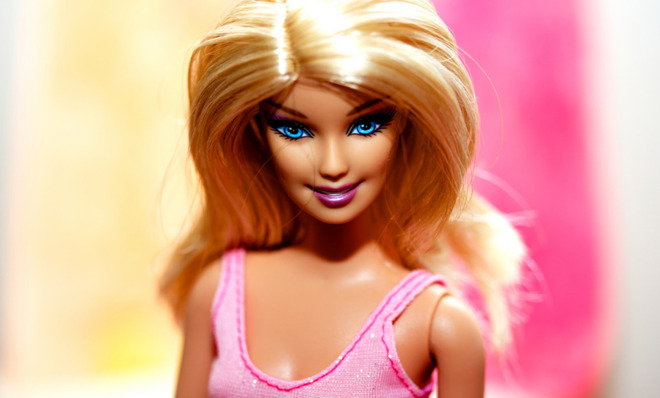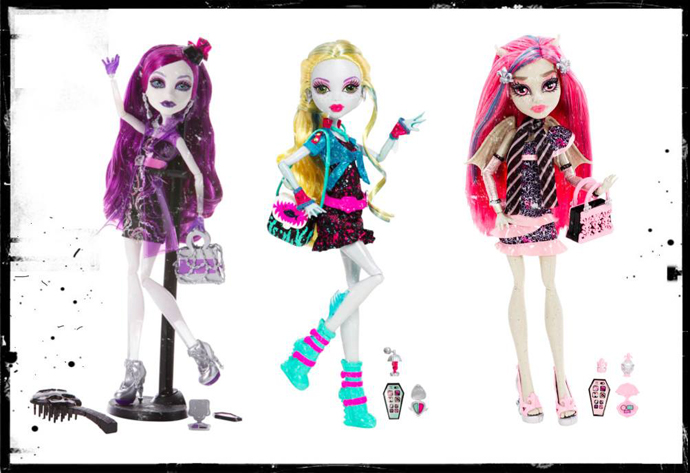In a doll-eat-doll world, Barbie just won't die
After four straight quarters of steep declines, Barbie sales are back up…slightly.

While much of the retail industry is struggling under low demand, Mattel, the world's largest toy company, beat profit estimates for the third quarter, thanks to three lines of dolls: The mini-me American Girls, the freaky Monster Highs, and the iconic Barbies.
Revenue for Mattel rose six percent to $2.21 billion, beating Wall Street's expectation of $2.17 billion, and sending shares up four percent. In addition, the company said it would pay a cash dividend of 36 cents a share this quarter.
Of the three lines of dolls propelling the toy maker's profits, Barbie is still the largest. This quarter, sales of the flagship doll rose by three percent, a welcome reversal after four quarters of sliding sales, including a painful 12 percent drop in the second quarter. Total shipments were also up 11.1 percent from the same quarter last year.
The Week
Escape your echo chamber. Get the facts behind the news, plus analysis from multiple perspectives.

Sign up for The Week's Free Newsletters
From our morning news briefing to a weekly Good News Newsletter, get the best of The Week delivered directly to your inbox.
From our morning news briefing to a weekly Good News Newsletter, get the best of The Week delivered directly to your inbox.
This is good news for the brand as the doll's reign has come into question lately. "[T]he iconic doll, which was introduced more than 50 years ago, had been overshadowed by the Monster High line," says Reuters. Mattel's Monster High dolls, meant to be the teenage daughters of classic monsters, have lanky, Barbie-like bodies, but pale skin, dyed hair, and names like Frankie Stein and Clawdeen Wolf.

These so-called "Goth Barbies," released in 2010, propelled a 28 percent rise in Mattel's girls brands in the third quarter, and even Mattel has admitted they're gobbling up some of Barbie's sales.
During Barbie's slide last quarter, Fox Business was harsh in its criticism:
While sales of Barbie dolls have set like the sun on a Malibu beach house, BMO Capital Markets analyst Gerrick Johnson estimates sales of the Monster High dolls have likely grown to more than $500 million in just three years since the line debuted. [Fox Business]
That may be an overstatement, but Monter High isn't Barbie's only in-house rival. Sales of the popular American Girl dolls, which go for more than $100 a piece, rose 20 percent last quarter, too. The brand has sold more than 23 million dolls since its launch in 1986.
A free daily email with the biggest news stories of the day – and the best features from TheWeek.com
That's an impressive number, but not as impressive as Barbie's. Mattel claims it doesn't know exactly how many Barbies it's sold since it launched 54 years ago, only that the number is over a billion. And although sales are lagging these days, the bodacious blond has proven her tenacity over the years, as trendier toys like Trolls and Beanie Babies have come and gone. It will likely take more than a freaky new doll-line to knock her off her throne.
Mattel is planning a campaign around a new Barbie Dreamhouse for the holiday season, which can account for over half of the toy maker's sales. Year-end numbers should be a lot more telling.
Carmel Lobello is the business editor at TheWeek.com. Previously, she was an editor at DeathandTaxesMag.com.
-
 ‘Care fractures after birth’
‘Care fractures after birth’instant opinion Opinion, comment and editorials of the day
-
 Shots fired in the US-EU war over digital censorship
Shots fired in the US-EU war over digital censorshipIN THE SPOTLIGHT The Trump administration risks opening a dangerous new front in the battle of real-world consequences for online action
-
 What will the US economy look like in 2026?
What will the US economy look like in 2026?Today’s Big Question Wall Street is bullish, but uncertain